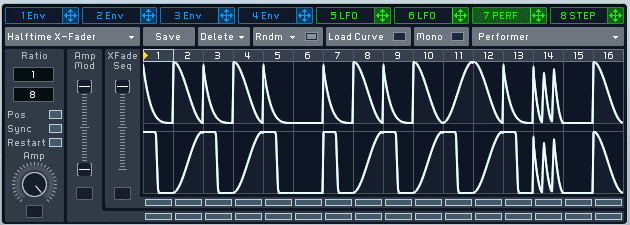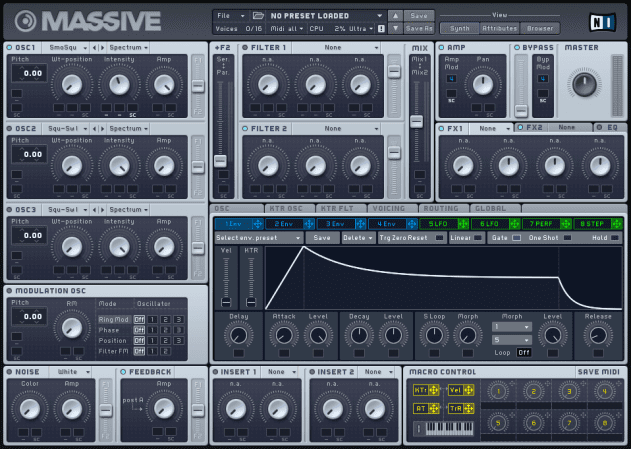
u-he are makers of award-winning software synthesisers and effects including Diva, Repro-1, Zebra2, Hive, Bazille, Presswerk and Satin.
Visit U-he

u-he are makers of award-winning software synthesisers and effects including Diva, Repro-1, Zebra2, Hive, Bazille, Presswerk and Satin.
Visit U-heDespite its popularity, many Massive users still aren’t aware of all its oscillator options. Bruce Aisher explores the under-appreciated power of the plugin’s wavetables.

In the eight years since Native Instruments introduced Massive to the world, it has come to be a cornerstone in the armoury of a significant number of producers. It was widely adopted, in particular, by dubstep and bass music producers, but it’s become a staple of countless genres.
Although well-known for its complex modulation routing abilities, one of Massive’s greatest strengths is the flexibility of its wavetable oscillators, which take their inspiration from features first found in early 80s digital synths. Interestingly though, Native Instruments place its ‘virtual analogue’ capabilities and huge preset collection well ahead of this on their marketing material. A lot of users don’t realise the power of Massive’s oscillators, but understanding the wavetable functionality on offer is the key to getting the most out of the synth and creating your own distinctive sounds.
Although the basic concepts behind the use of wavetables as an oscillator source extend back to the early computer music research of pioneers like Max Mathews and others, it was German musician and synth designer Wolgang Palm who commercialised the technique in the PPG Wavecomputer 360, and later the more fully-featured and more widely produced PPG Wave series.
The PPG Wave was not wholly digital. It combined a polyphonic digital oscillator engine with analogue VCAs and filters. This has helped to sustain its reputation as a (relatively rare) classic, even though newer fully digital units, such as the Waldorf Blofeld or the early 90s Korg Wavestation, have far better feature sets on paper. There are now also software options inspired by those original hardware models to choose from, such as Waldorf’s PPG Wave 3.v plugin.
So what is a wavetable? Analogue synths traditionally used simple, easily created waves as the core of their sound generation. Most analogue synth oscillators offer just a handful of wave shapes, typically including sawtooth, triangle, square or pulse and occasionally sine waves.
By the early 1980s, the massive growth, and plummeting cost, of digital processing started to see its influence felt on synth design and studio kit as whole.
One natural step was to replace the analogue oscillator with a digital one. This was essentially little more than a small digital memory used to store a single-cycle representation of whatever shape you choose – much like a sampler, but with sample lengths of only a few bytes. This in turn allowed harmonically unusual timbres to be harnessed in a relatively straightforward way.
This evolved into the concept of the wavetable, where a whole series of individual waves could be accessed and played back. The exact wave shape to be played could be placed under external control using an LFO, envelope or mod wheel. By using an audio crossfade (or if each wave in a wavetable is only fractionally different from its neighbour) smooth transitions are possible.
This means that wavetables can be used to create both subtle changes or complex evolutions. This is exactly what Massive allows, but with a whole host of other features to help expand its sound creation possibilities.
28th September, 2015

u-he are makers of award-winning software synthesisers and effects including Diva, Repro-1, Zebra2, Hive, Bazille, Presswerk and Satin.
Download the demos and try them for yourself at www.u-he.com
Attack Magazine is funded by advertising revenue. To help support our original content, please consider whitelisting Attack in your ad blocker software.
x
09.44 PM
Great article! Biggups!